Watch the malaria parasite invade a human red blood cell. It takes 30 seconds.
(via New Scientist blog)
Middle and High School … from a Montessori Point of View
Watch the malaria parasite invade a human red blood cell. It takes 30 seconds.
(via New Scientist blog)
A beautiful piece of editing. The non-verbal communication is priceless.
NPR had a great article today summarizing what’s been going on in Tunisia.
I played the article this morning. We had a little discussion about the conflicting groups in Tunisia and the possible causes of the revolution. It would be nice to be able to follow the emergence of a democracy in real-time.
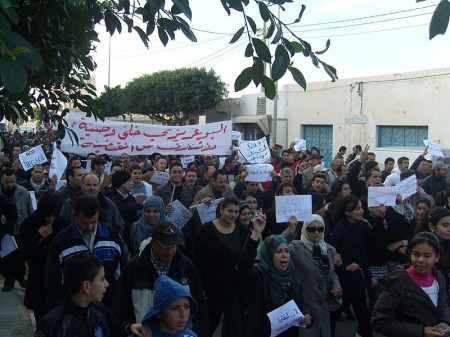
Raymond Cohn has a great table of immigration data on the Economic History Association website.
This data ties very nicely into the work we’re doing on graphing. The Excel file with the post 1820 data, and another with pre-1790 data, make it easier to work with (note the pre-1970 data comes from the Wikipedia page on the history of immigration; it was the easiest source to find a table of data).
Since each small group of students is responsible for a different wave of immigration, the groups will create bar graphs showing the countries of origin for each wave. They should look like these:
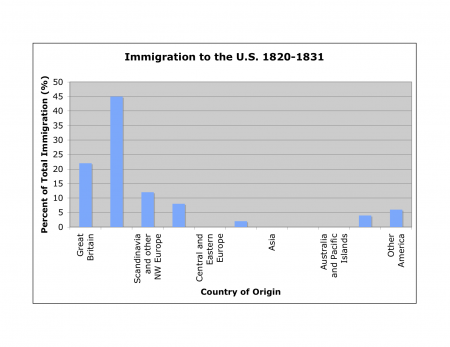
and,
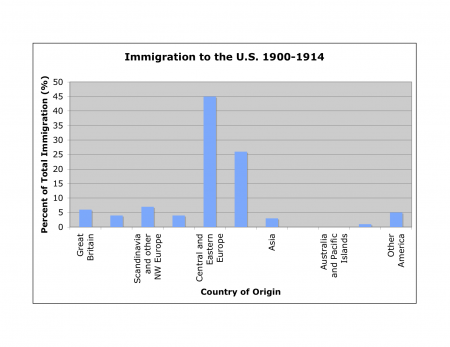
Plotting the time series as a line graph would be another great way to slice the data:
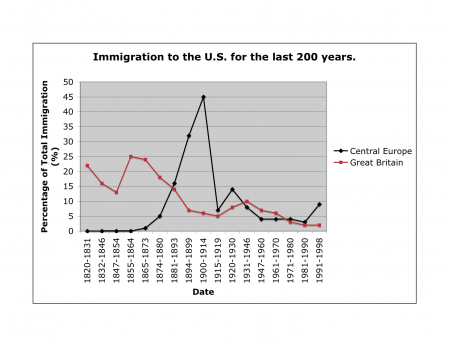
Note that the data in the table is as a percentage of total immigration, so the numbers do not compare directly from one time period to the next; however, the proportions still work to show the same patterns.

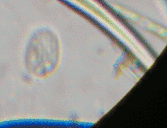
Well, since certain organelles within our cells (mitochondria) have their own DNA, it’s been suggested that they were once separate organisms that became the ultimate symbionts. Now, someone’s found that single celled amoebas may actually farm the bacteria they eat.
P.S. While looking for a picture of the guilty party, I came across this nice image of the amoeba, Dictyostelium discoideum, splitting into two on Wikimedia Commons.
A key premise of the Montessori approach to education is that, given children’s innate drive to learn, learning is its own reward. Extend this to adults and you realize that the “work” should provide its own motivation. Cristin O’Keefe notes that in 1847, Thomas Dent Mutter pointed out:
The world is no place of rest. I repeat, it is no place of rest but for effort. Steady, continuous undeviating effort. Our work should never be done and it is the daydream of ignorance to look forward to that as a happy time, when we shall wish for nothing more, and have nothing more to accomplish.
–Thomas Dent Mutter (1847) via Cristin O’Keefe via Harriet via The Dish.
I sometimes wonder, with our adolescents being somewhere between childhood and adulthood, if sometimes neither set of rules apply. For some students, they’ve not yet discovered the “work” that inspires them and, without that overarching objective to drive them, can’t find the motivation for learning.
Adolescence can last a long time.
Age-appropriate is quite the interesting phrase, particularly when it comes to adolescents. They are making the big transition to adulthood, but their maturity can vary widely even within the same age group.

Michael Chabon has a fascinating post on his, partially successful, attempts to read Huckleberry Finn to his pre-adolescents without the racial slurs. There is even going to be a edition of the book put out that replaces all the n-words with “slave”. I can see their point, but I’m not sure I’d go for it, even in the middle school.
The internet poses its own set of conundrums. One of my students mentioned a certain website on their blog that they, “do NOT recommend it for kids under 12 due to foul language”. The recommended site is quite fascinating and entertaining (I got sucked into it for quite a while), if a bit harsh to the denizens of the website, etsy, but the writing can be quite adult. I’m not quite sure how to address this. I really appreciate how forthright the student was with the (convenient?) age recommendation, but I’d probably make the cutoff a bit older myself.
Differentiating what’s age-appropriate and what’s not is so terribly subjective. I guess the key difference between the website and Huck Finn is in its purpose and relevance within the text. Twain’s harsh language to makes a specific point about race relations that’s relevant to middle-schoolers. The website takes uses a more adult language to relate to an older audience.